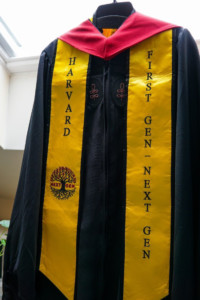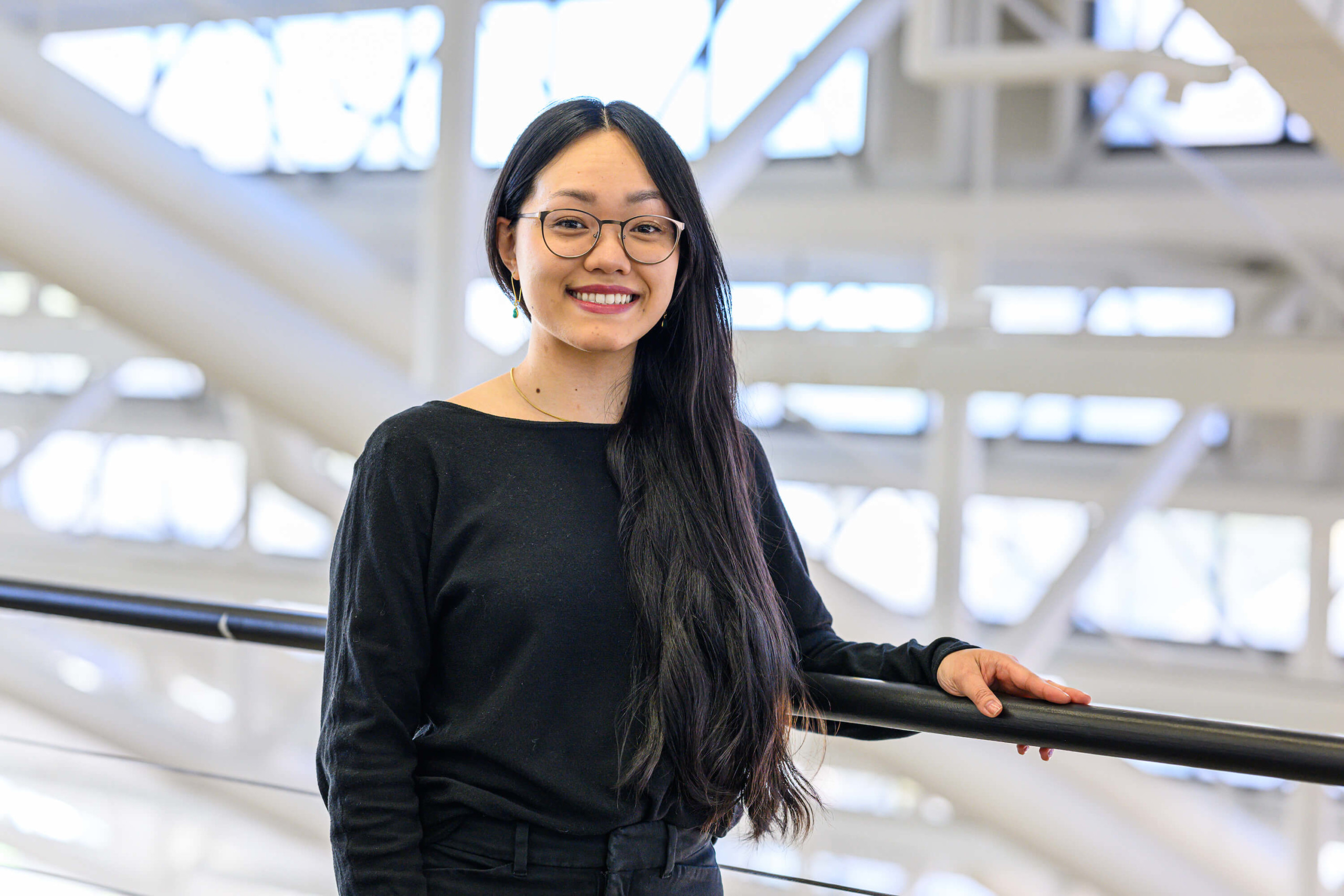For Dianne Lê (MLA II ’22), design and research is deeply informed by her background. “[I’m] a daughter of war refugees, a first-generation college student, a first-generation graduate student,” she explains. She sees landscape architecture as a way to help people not just survive, but thrive.
Lê studied mechanical engineering at Rutgers before realizing that landscape architecture, which seemed “more community and people–centered,” was a more aligned path. She threw herself into her new discipline, winning a research grant that allowed her to visit Berlin to research the relationship between war, migration, landscape, and the built environment. Toward the end of her studies, her mentors encouraged her to pursue landscape architecture in a different academic environment. A summer at the Design Discovery program solidified her desire to come to the Harvard Graduate School of Design.
Lê is focused on how landscape architecture interacts with people’s lives and broader institutional concerns. “People create and give meaning to spaces,” she says. “And the spaces and environments in which we grew up also give us a sense of meaning and understanding of who we are.” Lê’s family background—her paternal grandfather was one of the “boat people” who fled Vietnam, and her maternal grandfather a military officer and prisoner of war for 13 years—has made her attentive to refugee and immigrant experiences of landscape as well. “If we come to terms with [the] reality of international conflict and climate crisis,” she says, “we should always expect these perpetual migration and refugee crises to exist. We can’t not center our design projects around people—that needs to be the starting point.”
People create and give meaning to spaces. And the spaces and environments in which we grew up also give us a sense of meaning and understanding of who we are.
Dianne Lê
Much of Lê’s research and design work considers how contaminated landscapes can be “transformed into landscapes of recovery and resilience.” As an undergraduate, she was interested in how wartime chemical weapons, such as Agent Orange, were “contaminating sites and places where people live and grow crops . . . and impact[ing] the whole ecosystem as well.” At the GSD, she continued to explore the human cost of polluted landscapes—and to design interventions to address them.
In the Tar Creek Remade studio, taught by Niall Kirkwood, Lê and other students considered how design could repair a polluted landscape. Tar Creek, in northeast Oklahoma, was one of the first Superfund sites in the US. For 70 years, it was home to immensely profitable lead and zinc mining—made possible because members of the Quapaw Nation were forced into unfavorable leases. After the mines closed, residents were left with toxic waste and sinkholes. Lê and her classmates were asked to propose projects for environmental remediation. Two Quapaw tribal advisors, Rebecca Jim and Earl Hatley, “attended every class meeting, every desk crit,” Lê says. “For them to be so involved . . . made the studio so enriching.”
She also considered how climate resilience work and energy technologies could shape the future, through an internship at the Wind Energy Technologies Office of the Department of Energy. “I’m grateful for [my] mechanical engineering background because it helped me understand structures, material properties, and energy,” she says.

Lê’s interactions with her GSD peers have also influenced her studies. As a first-generation student, she faced numerous hurdles throughout her academic career. “Finding a community,” Lê notes, “was immensely valuable and helped me push through and continue my studies.” In turn, Lê helped research and develop programming at the GSD to support first-generation students. She also designed a new First-Gen/Next Gen graduation stole for graduates across all Harvard schools.
Conversations with peers expanded Lê’s practice into new disciplines. She recalls one semester where she shared a desk with a GSD student in urban design. “This semester,” Lê says, “all of my classes are urban design department classes. And all of his courses are landscape architecture.”
This flexibility has deepened Lê’s work. “In landscape architecture, we constantly ask how people are impacted by the spaces we create,” she says. By including urban design frameworks, “I could think more deeply about how communities are developed and built, and the tangible and intangible value systems established in a location.”
After graduation, Lê intends to “create places and opportunities that help people and communities have a better quality of life, and have more access to resources in which they can self-actualize.” Her family background, and her research and design work, have emphasized how landscape and built environments can promote security, community, and belonging. “It’s so crucial to understand who is residing [at a site],” Lê says. “What are their needs, values, concerns? The spaces we create [should] respond to that and demonstrate: we are listening to you, and we are doing something about it.”
Read more profiles from the GSD Class of 2022.
